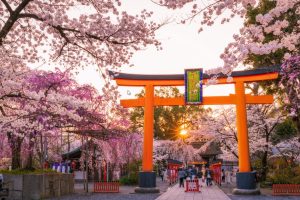
Lisbon, Portugal: A Colorful Journey Through History, Food, and Ocean Views
Introduction – Welcome to Lisbon, the City of Light
If there’s one city that perfectly blends history, color, sunshine, and ocean breeze—it’s Lisbon, the vibrant capital of Portugal. Sitting gracefully on the edge of the Atlantic Ocean, Lisbon is a city that feels both timeless and alive. Cobblestone streets, pastel-colored houses, and yellow trams climbing steep hills make it feel like a living postcard.
Yet, Lisbon isn’t just about beauty—it’s about feeling. The rhythm of Fado music echoing through Alfama, the aroma of fresh pastries in the air, the warm hospitality of locals—it all makes you feel at home, even if you’ve never been here before.
In this guide, we’ll take you on a colorful journey through Lisbon’s history, culture, food, and stunning views—the ultimate travel inspiration for anyone dreaming of Europe’s most soulful city.
Chapter 1 – A Stroll Through Time: The History That Shaped Lisbon
Lisbon is one of Europe’s oldest capitals, even older than London, Paris, or Rome. The city has seen Phoenicians, Romans, Moors, and Portuguese explorers come and go, each leaving a mark that shaped Lisbon’s fascinating identity.
1.1 The Age of Discoveries
During the 15th and 16th centuries, Lisbon was the center of the world’s most powerful maritime empire. It was from here that explorers like Vasco da Gama and Ferdinand Magellan set sail to discover new lands, bringing back treasures, spices, and stories from across the globe.
Walk along the Belém waterfront, and you’ll see the Monument to the Discoveries—a tribute to those brave sailors who helped Portugal dominate the seas. Nearby stands the Belém Tower, a UNESCO World Heritage site and one of Lisbon’s most iconic landmarks.
1.2 The Great Earthquake of 1755
Lisbon’s history also carries stories of resilience. In 1755, a devastating earthquake, followed by a tsunami and fire, destroyed much of the city. But out of the ashes rose a new Lisbon—rebuilt with elegance and purpose under the leadership of Marquis of Pombal.
Today, the wide boulevards and grid-style layout of Baixa District owe their design to this ambitious reconstruction.
Chapter 2 – Neighborhoods That Tell a Story
Each of Lisbon’s neighborhoods feels like a world of its own. Exploring them is like flipping through the pages of a living storybook.
2.1 Alfama – The Soul of Lisbon
If Lisbon has a heartbeat, it’s Alfama. This is the city’s oldest neighborhood, where narrow alleys twist and turn up the hill beneath the São Jorge Castle. Laundry flutters from balconies, Fado music spills from taverns, and every corner feels soaked in nostalgia.
Be sure to catch a live Fado performance—a traditional Portuguese music style full of emotion and longing. It’s not just a song; it’s an experience.
2.2 Bairro Alto – The Night Comes Alive
As the sun sets, Bairro Alto transforms into Lisbon’s nightlife hub. The streets fill with laughter, music, and the sound of clinking glasses. Whether you’re into chic rooftop bars or hole-in-the-wall taverns, Bairro Alto never disappoints.
2.3 Belém – Where History Meets Sweetness
Belém is where Lisbon’s maritime history meets its sweetest treasure: the Pastel de Nata. The legendary Pastéis de Belém bakery has been serving these creamy custard tarts since 1837. Fresh out of the oven, sprinkled with cinnamon and powdered sugar—they’re pure bliss.
2.4 LX Factory – The Hipster’s Paradise
For something modern and creative, head to LX Factory, a trendy complex of cafés, boutiques, and art spaces housed in old industrial buildings. It’s the perfect spot for brunch, art browsing, and Instagram-worthy photos.
Chapter 3 – A Feast for the Senses: Lisbon’s Food Scene
Lisbon’s culinary world is a flavorful mix of tradition and innovation. Whether you’re into seafood, pastries, or fine dining, the city delivers in every bite.
3.1 The Power of Simplicity
Portuguese cuisine celebrates simplicity and freshness. Locals believe that food doesn’t need to be fancy to be delicious—it just needs love and good ingredients.
3.2 Must-Try Dishes in Lisbon
- Bacalhau à Brás: Lisbon’s favorite codfish dish—shredded cod mixed with eggs, onions, and crispy potatoes.
- Sardinhas Assadas: Grilled sardines are a summer staple, especially during the Festas de Lisboa in June.
- Amêijoas à Bulhão Pato: Clams cooked in garlic, olive oil, and cilantro—simple and perfect with bread.
- Bifana: A juicy pork sandwich, best enjoyed with a cold beer.
- Arroz de Marisco: A rich seafood rice dish that’s a cousin of Spanish paella, but with a Portuguese soul.
3.3 Sweet Temptations
No trip to Lisbon is complete without Pastel de Nata, but don’t stop there—try Travesseiros de Sintra, Queijadas, and Arroz Doce (Portuguese rice pudding).
3.4 Where to Eat
- Time Out Market: A gourmet food hall where Lisbon’s best chefs showcase their specialties.
- Cervejaria Ramiro: A legendary seafood restaurant loved by locals.
- Belcanto: For Michelin-star fine dining by chef José Avillez.
Chapter 4 – Ocean Views and Hidden Escapes
Lisbon’s beauty doesn’t end in the city center—it extends to its breathtaking coastlines and nearby getaways.
4.1 Miradouros – The Best Views in Lisbon
The city’s hilly landscape rewards you with countless miradouros (viewpoints).
Some favorites include:
- Miradouro de Santa Luzia – romantic and colorful, overlooking Alfama.
- Miradouro da Senhora do Monte – panoramic views perfect for sunset.
- Elevador de Santa Justa – an iconic iron lift connecting downtown to the upper neighborhoods.
4.2 Beaches Near Lisbon
If you crave the ocean, you’re just a short train ride away.
- Carcavelos Beach – ideal for surfing and people-watching.
- Costa da Caparica – long sandy stretches and beach bars.
- Cascais – a charming seaside town with upscale vibes and great seafood.
4.3 Day Trips from Lisbon
- Sintra – A fairytale mountain town filled with colorful palaces like Pena Palace.
- Cabo da Roca – The westernmost point of continental Europe, dramatic and beautiful.
- Évora – A UNESCO city full of Roman ruins and medieval charm.
Chapter 5 – The Culture and Charm of Everyday Lisbon
Lisbon’s charm isn’t only in its sights—it’s in its atmosphere.
5.1 The Sound of Fado
Fado music is the soul of Portugal. You’ll find intimate Fado houses across Alfama and Mouraria, where singers perform songs of love, loss, and longing. Even if you don’t understand Portuguese, you’ll feel every emotion.
5.2 The Art of Azulejos
Everywhere you look, Lisbon is covered in azulejos—beautiful ceramic tiles that tell stories from history, religion, and daily life. Visit the National Tile Museum (Museu Nacional do Azulejo) to appreciate their artistry.
5.3 The Iconic Trams
No Lisbon experience is complete without a ride on Tram 28, the vintage yellow tram that winds through the city’s most scenic neighborhoods. It’s slow, creaky, and utterly charming.
Chapter 6 – When to Visit and Travel Tips
Lisbon is beautiful year-round, but your experience can vary depending on the season.
6.1 Best Time to Visit
- Spring (March–May): Warm weather, blooming jacarandas, fewer crowds.
- Summer (June–August): Festive, sunny, and ideal for beach days—but expect higher prices.
- Autumn (September–November): Still warm, perfect for sightseeing and local festivals.
- Winter (December–February): Quiet, cool, and cozy—great for exploring without crowds.
6.2 Getting Around
Lisbon’s public transport system is efficient—trams, buses, metro, and even ferries. For short distances, walking is best (though be prepared for hills!).
6.3 Travel Tips
- Wear comfortable shoes (those cobblestones can be tricky).
- Try local wines—Portugal makes some of Europe’s best.
- Learn a few Portuguese phrases; locals appreciate the effort.
Chapter 7 – Lisbon’s Modern Spirit
Today’s Lisbon is more than its past—it’s a city alive with creativity.
You’ll find tech startups, street art, and modern architecture blending with centuries-old charm.
The Parque das Nações district, for instance, showcases futuristic design with oceanfront views, while MAAT Museum combines modern art and architecture in stunning fashion.
Lisbon is a city that evolves yet stays true to its roots—a perfect balance of old soul and new energy.
Conclusion – Fall in Love with Lisbon
By the time you leave Lisbon, you’ll understand why travelers call it one of Europe’s most enchanting cities.
It’s not just the views or food or history—it’s the feeling of walking through a city that celebrates life in every color, every sound, and every smile.
Lisbon is more than a destination—it’s an emotion, one that stays with you long after your trip ends.
So pack your bags, follow the scent of pastries and ocean breeze, and let Lisbon, Portugal show you what real magic feels like.






